Copper is a lovely addition to a home’s decorating style or cookware, but I was hesitant to clean my tarnished copper canisters from my grandmother until I learned about this genius trick! You can get them shiny again with our tips on how to clean copper home décor like a copper sink or copper-bottom pots and pans.
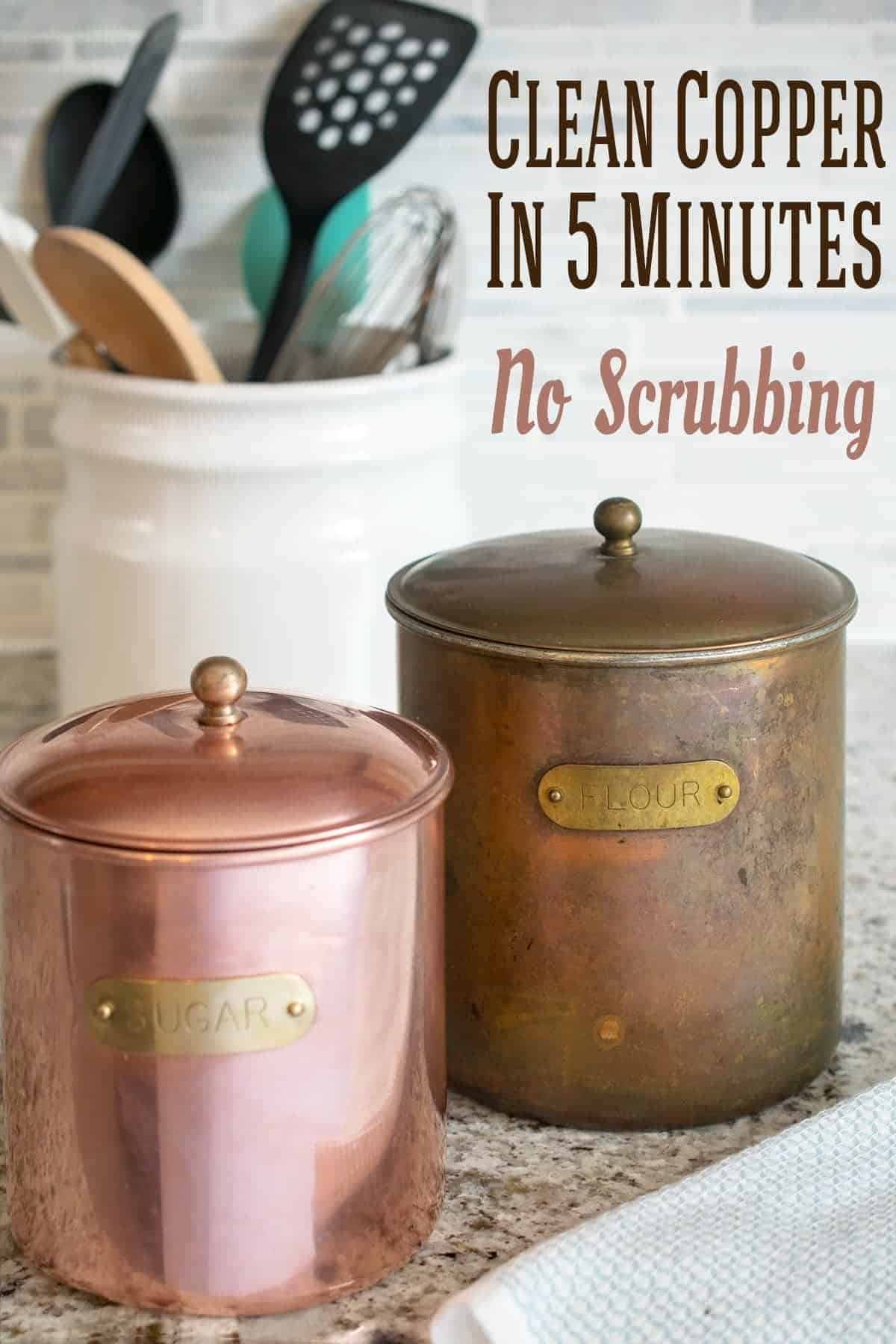
Copper items seem to be everywhere these days from copper pots to light fixtures and other home décor accents.
The one problem with copper and most metals is that over time, air causes copper to tarnish. While tarnish can bring a certain beautiful patina in some surroundings, brilliant copper also lends glam and warmth to a space.
Who doesn’t love a good upcycle?
These canisters are maybe 60 (or more) years old, so I was very careful in choosing a natural method that would not damage the copper pieces and I have found the one!
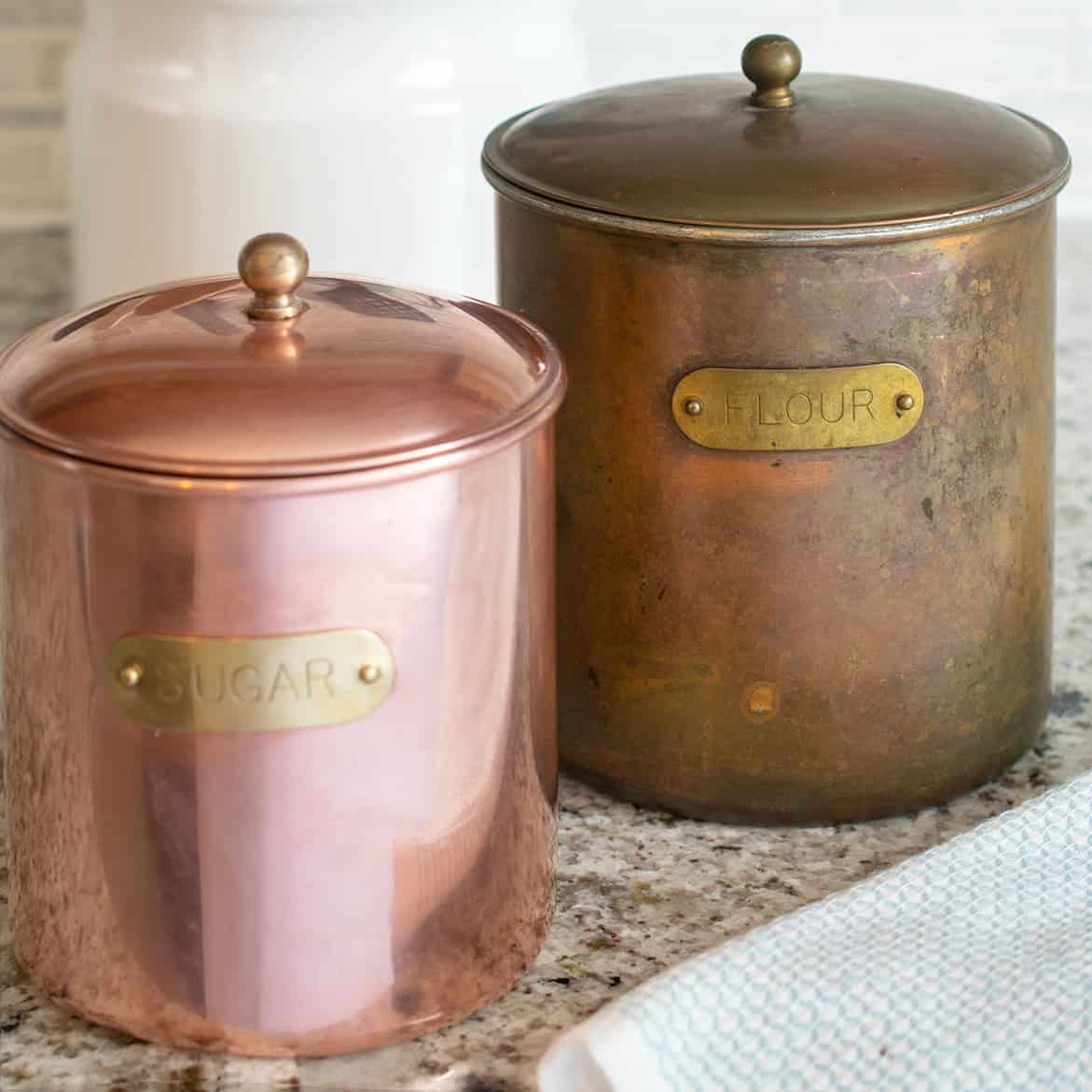
Cleaning Copper Naturally & Fast Experiment
Having several canisters allowed me to do some quick experimentation about the best way to restore copper. All of these methods work well on both solid copper and copper plating.
Although I will go through all the methods I tried, if you just want the BEST ONE…Skip to the bottom (Method #3) for the instructions.
Before we go through each method, sometimes what looks like tarnish may be grease or grime. These methods won’t clean under the grease, so you have to remove it first. Try cleaning copper with a soft cloth or microfiber cloth to remove any dirt.
Method #1: Removing Tarnish with Ketchup
After my experiments in best methods for cleaning brass, I was not too thrilled to try this one out. The recipe goes like this: slather ketchup all over the copper piece and watch the copper oxide disappear.
Another Method is to use lemons. The results were very similar to the ketchup, so I will lump it in here. To naturally clean less fragile copper pieces, cut a lemon in half, sprinkle salt to the cut side and gently rub the mixture onto the item. The table salt speeds up the process. You can also make a paste with lemon juice, and equal parts salt and baking soda.
Conclusion – The ketchup method did work, albeit very slow and messy. I am convinced that this worked only because of the vinegar present in the ketchup. Plus, who wants to waste all that ketchup?
Method #2: Copper Cleaning Agents
Metal Polishes like Brasso or Barkeeper’s Friend do work well in removing tarnish on copper pots and pans, but there are some cautions. They may etch or dull delicate surfaces. Test a small hidden area first.
- Sprinkle some of the cleaner in a container and mix with a bit of water until a paste forms.
- Rub the copper surface with a soft cloth and the mixture to remove tarnish.
- Rinse and dry thoroughly.
Conclusion – This method actually worked beautifully, but the cautions and the scrubbing were definitely some drawbacks compared to the best method. I would probably use this method for cleaning copper pots and copper-bottomed pots.
Method #3: Salt and Vinegar
And here is the easiest and most effective method I tried!
To clean heavily tarnished copper pieces:
- In a large pot boil 1 cup distilled white vinegar, 1 tablespoon of salt, and 5 cups water (double if you are cleaning larger items).
- Place the tarnished copper in the boiling water with tongs. As the copper oxide is removed, turn the piece to a new spot.
- You can also ladle the water bath over the piece for hard-to-reach areas. If needed, use a soft toothbrush to get into crevices to remove grime.
- Once all the tarnish is removed, make sure to clean the copper piece thoroughly with warm water. Vinegar and salt can speed up the collection of tarnish.
If you just want to freshen up copper rather than remove heavy tarnish, you actually don’t need to boil the vinegar, just mix 1 cup vinegar with 1 tablespoon salt and rub with a soft cloth.
How To Keep Copper from Tarnishing
It’s pretty darn impossible to completely avoid exposing your copper items to oxygen and water. There is only one way to really seal metal so that it stays bright and shiny.
- You can apply a lacquer coating that will seal out water and oxygen. Make sure to do several even, thin coats so it is completely coated well. This won’t work on items exposed to heat like pots and pans or copper sinks.
- You can apply a thin coat of oil to slow the process. Some commonly used oils for preventing tarnish are linseed oil, baby oil, mineral oil, and beeswax. A high-quality car wax can also be applied for items that are strictly for display. If you are coating something that you handle often use to cook or store food, be sure to use an oil that is safe for consumption.
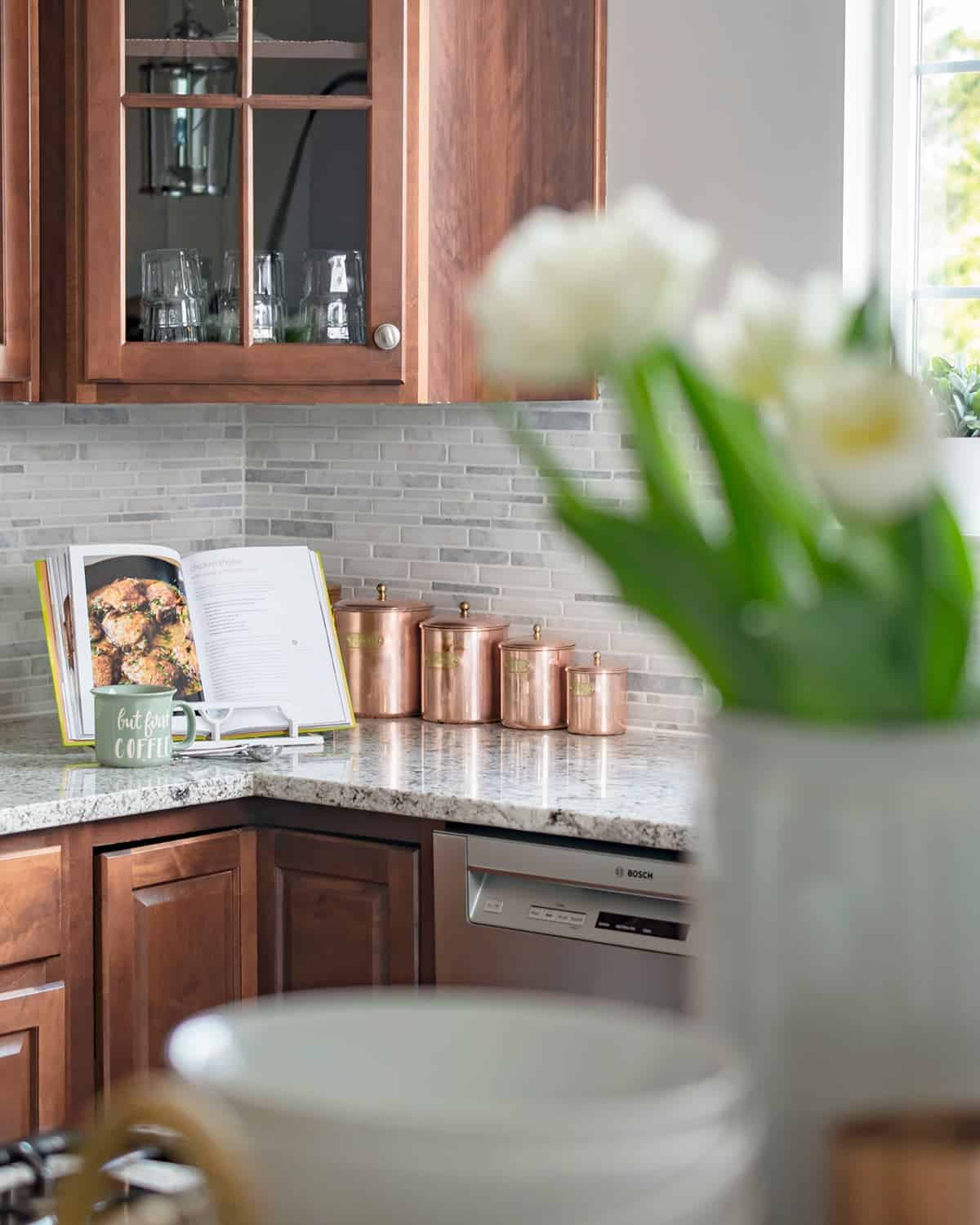
So, there you have it! These canisters were the perfect mix of function and a bit of style in the kitchen. And now anytime you see copper or other metals in yard sales or the thrift store, you may be able to bring it back to life.
Looking for more ways to bring your bring your favorite items back to life? Check these out:
- How to Clean Tarnished Brass
- The Best Recipes for DIY Glass Cleaner
- Antique Trunk Makeover with World Maps
- Printable Whole House Deep Cleaning Checklist
Frequently asked questions
If tarnish continues to build up over time, it can develop a patina. It’s a blue or green film like you’ve probably seen on the Statue of Liberty. Copper will turn dark when exposed to water and blue green when exposed to oxygen. This oxidation isn’t harmful, but it can mean that the copper may lead to corroding over time.
Sometimes when cleaning copper the tarnish is removed, but it doesn’t quite get the same gleam. You can polish it with a natural paste of salt, flour, and vinegar! Mix a quarter cup each of flour and fine salt in a bowl. Add in white vinegar slowly until it forms a thick paste. Polish your copper item with a microfiber cloth and then rinse and dry.
Some commonly used oils for preventing tarnish are linseed oil, baby oil, mineral oil, and beeswax. You can also apply a lacquer coating that will seal out water and oxygen, but this can only be used for decorative items that aren’t exposed to heat.
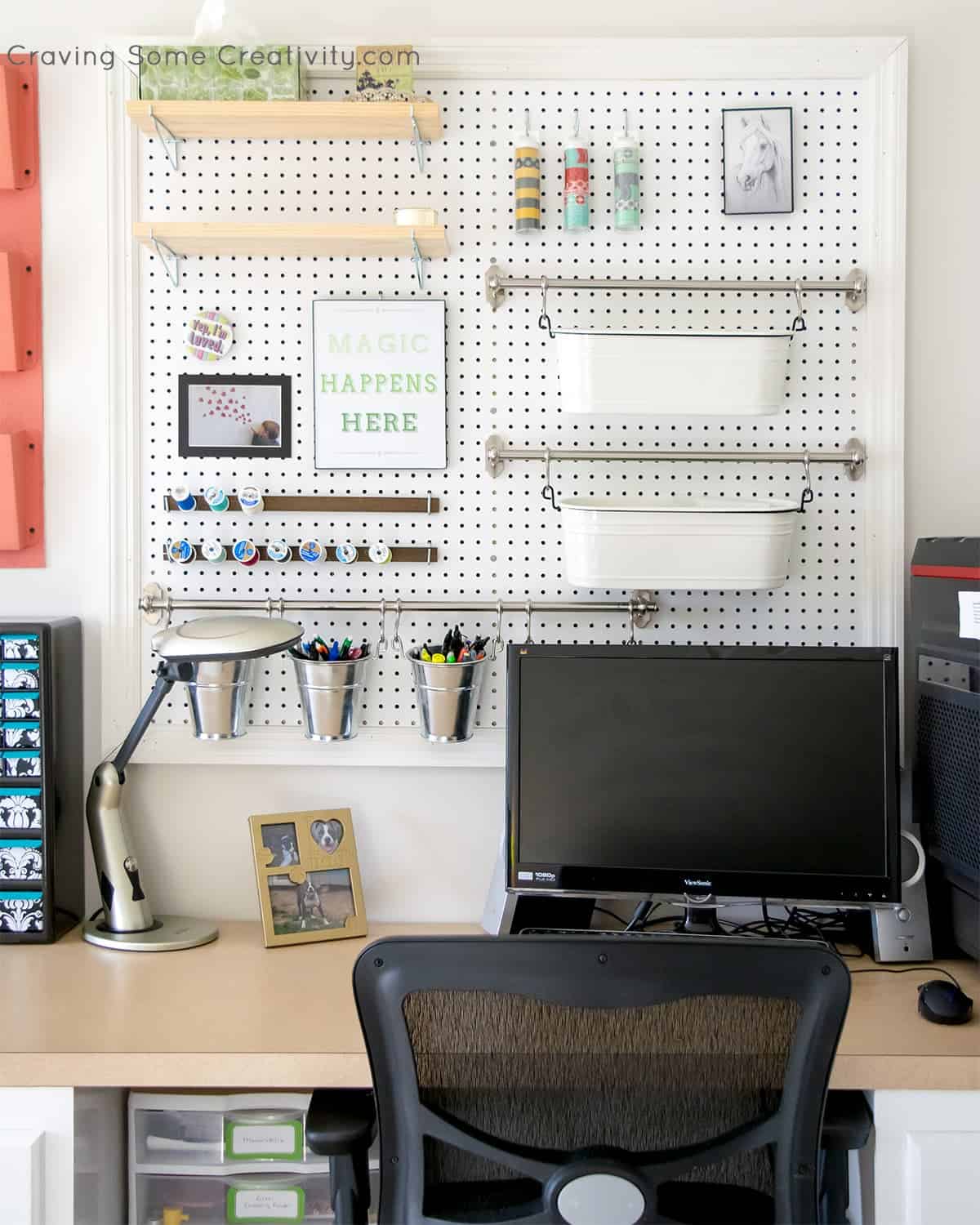
Grab our free series "Weekend Home Projects that will Transform Your Life" Sign up below to receive updates including free printables, organization tips, home improvement projects, recipes and more! |
More Great Restoration Ideas!
PS I love seeing your creations! Be sure to take a photo and tag #cravingcreative on Instagram! You can also stay in touch with me through following me on Instagram, Pinterest, and subscribing to the newsletter!
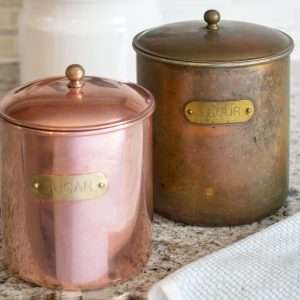
How To Remove Tarnish from Copper
Tools
- Soft Cloth
Supplies
- 1 cup Distilled white vinegar
- 1 tablespoon Table Salt
- 5 cups Water distilled is preferred
Instructions
- Add the ingredients in a large pot over medium high heat. Bring to a boil. Wipe any dirt or grime off of the copper piece.
- Place the tarnished copper in the boiling water with tongs. As the copper oxide is removed, turn the piece to a new spot. You can also ladle the water bath over the piece for hard to reach areas. If needed, use a soft toothbrush to get into crevices to remove grime.
- Once all the tarnish is removed, make sure to clean the copper piece thoroughly with warm water. Vinegar and salt can speed up the collection of tarnish.


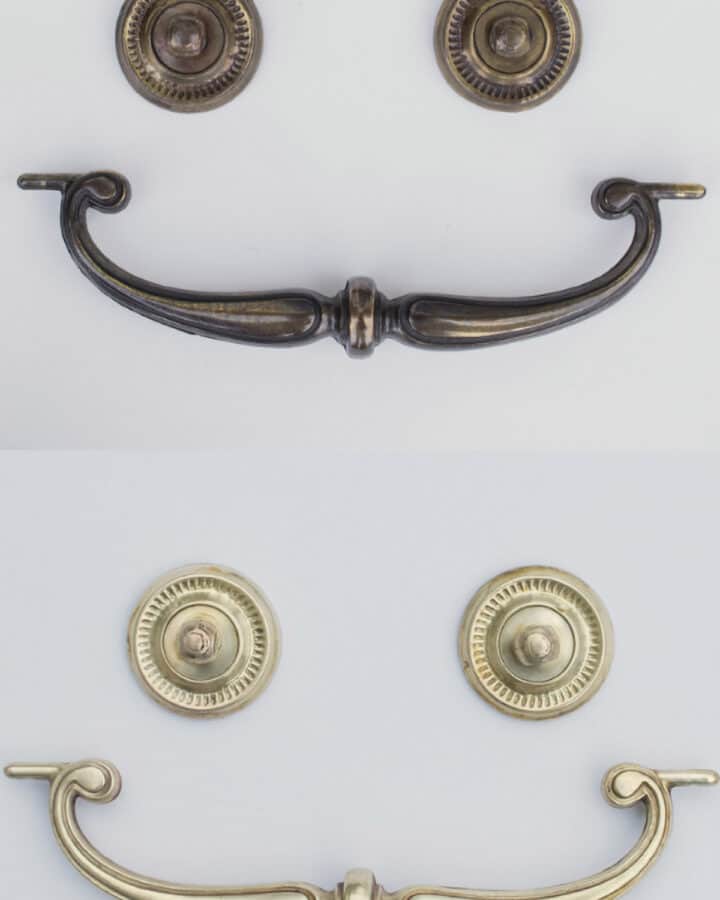
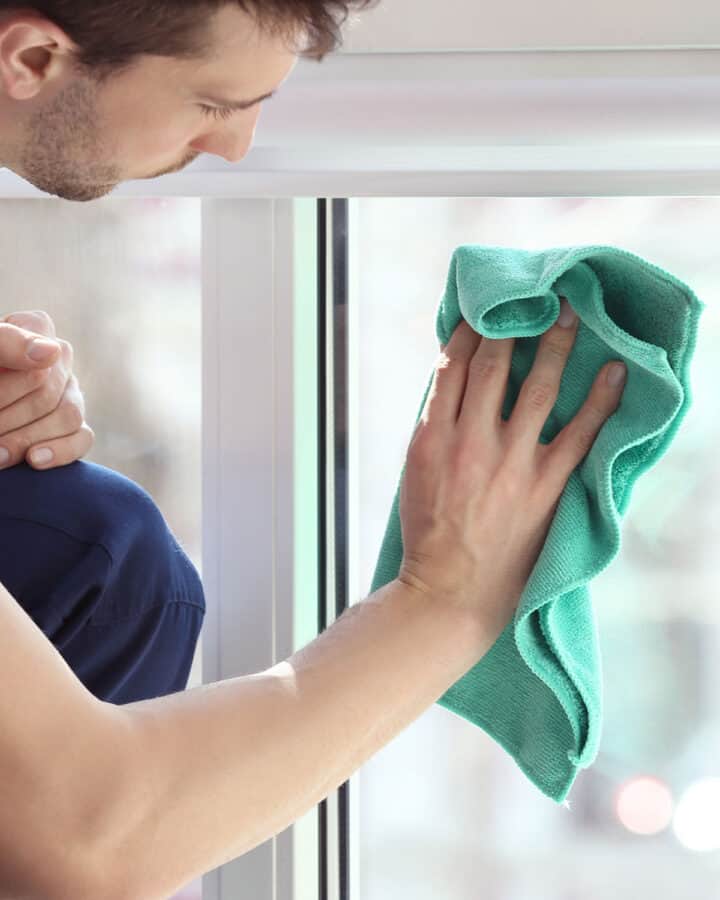
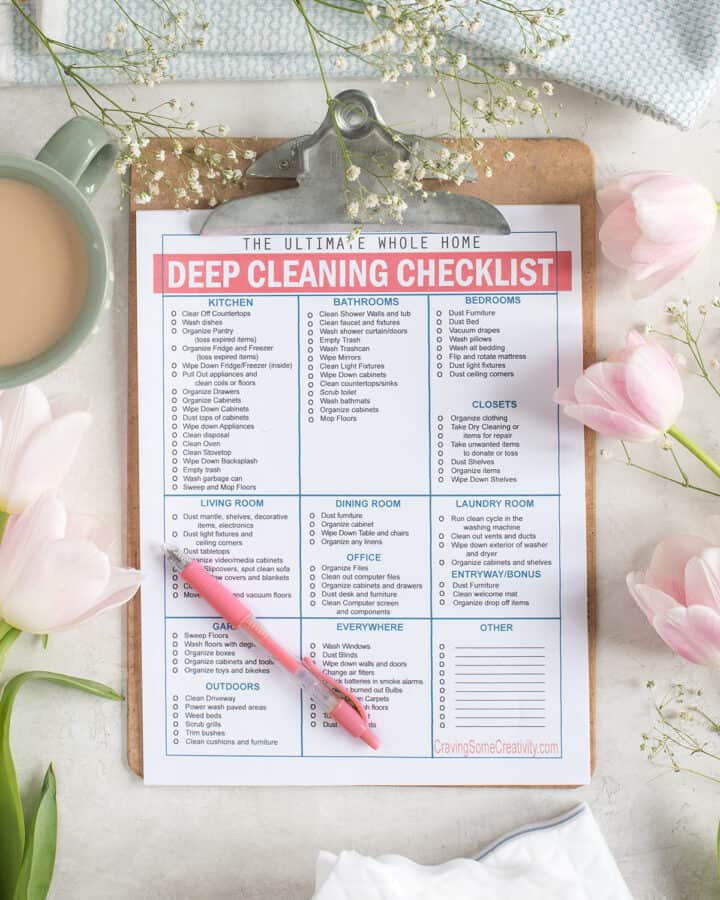
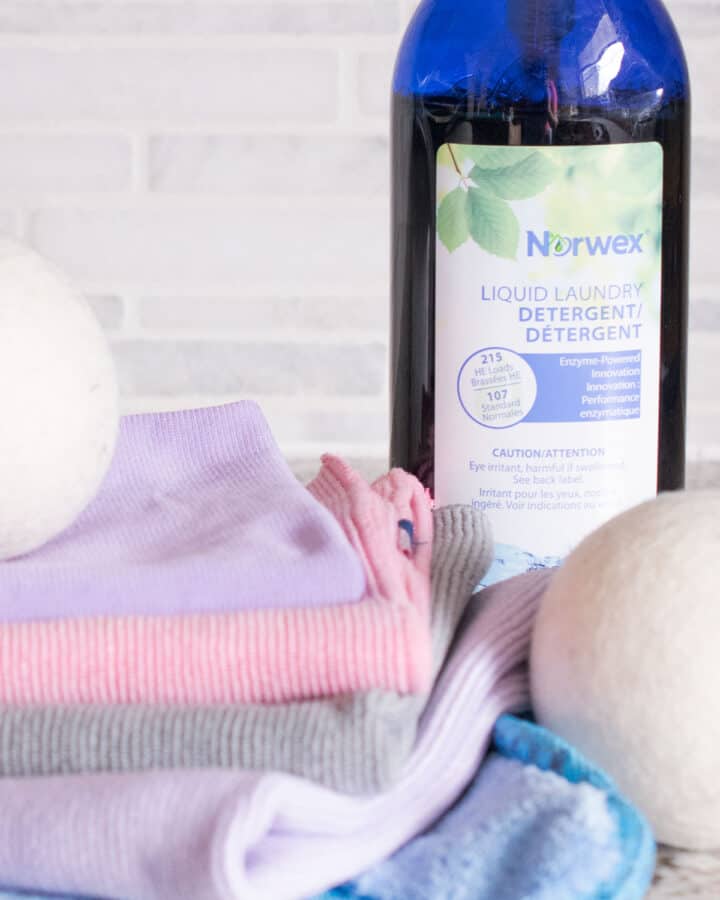
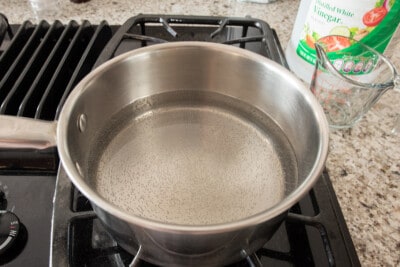
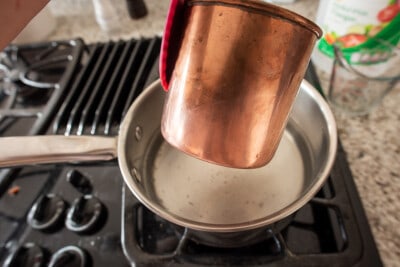
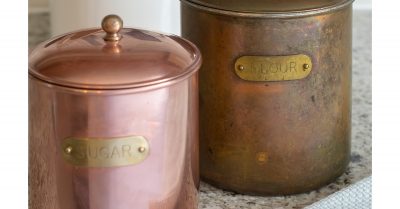
Sharon Word says
I have a large copper tub that needs to be cleaned. It is too large for a pot on stovetop. Any suggestions on what to use for a large pot ?? Thank you
Rachel says
In that case, I would try using as hot as possible water (don’t burn yourself, of course!) and a soft cloth to lay on the area to remove the tarnish.
Rico says
You can boil the vinegar, water,& salt in the pot itself! Just use enough to fill the pot 3/4 full. For the outside you may have to place pot in sink, soak a rag w/boiling mixture,and place it on outside of copper pot. Just continue all around til complete. Or put a layer of ketchup on copper, after a few minutes wipe off, then rinse well.
Kimberly says
I don’t keep table salt in the house. We use Himalayan salt. Can Himalayan salt be substituted for table salt?
Rachel says
I think it should be fine, although I haven’t tested it. Himalayan salt only has trace minerals in it so the sodium chloride with still react with the copper surface.
ChocHands Hazelnut says
All I have to say is the vinegar method really works!!Thanks
machelle says
Did you know Copper is a very antimicrobial metal more so than stainless steel
Nancy Law says
Olderstainless steel pots had a copper bottom to redistribute the heat more evenly.
My mother has them. I believe is Revere ware. She uses Copper Twinkle to get off the tarnish.
It comes in a small plastic container with a sponge and easily takes it off with no intense rubbing or anything like that.
Melodee says
Can you use the pot later for cooking food in after you used it for getting the tarnish off of the Copper
Rachel says
Great question! Yes, you can absolutely use a copper pot after removing tarnish.